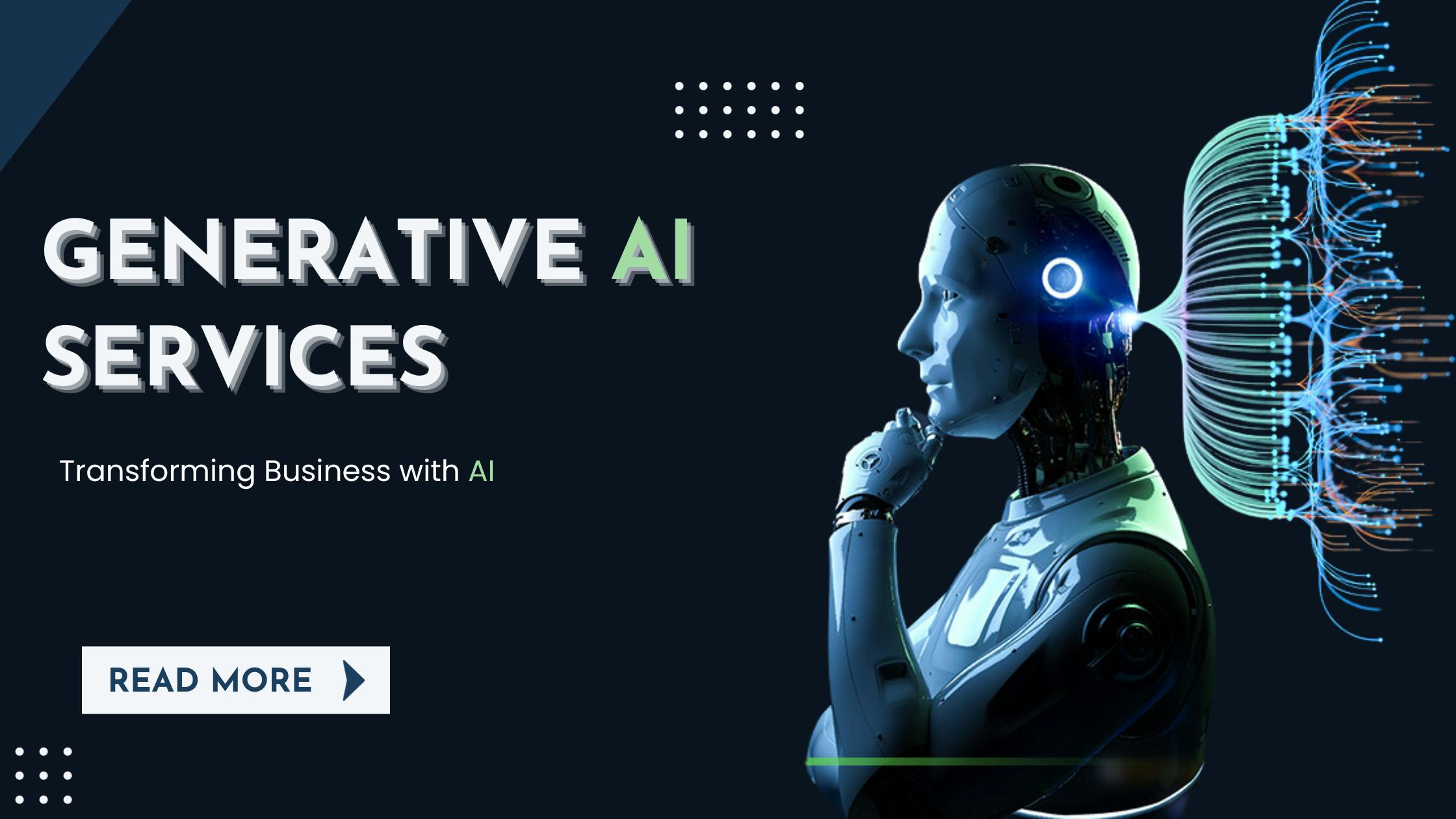A Guide on Generative AI Services – How it Differs from Traditional AI and Use Cases
Artificial Intelligence (AI) as a concept existed in movies, television series, and philosophy well before it became a reality. Therefore, it comes as no surprise that AI and Art are intertwined. Still, when the first application of generative AI services was conceptualized, they were more based on basic algorithms. Made to fulfill specific tasks, such as data analysis for decision-making. However, those are the initial applications of technology.

Once the product came into the hands of the general public and major players started to see the merit in the advanced use of machine learning and artificial intelligence, more uses of the technology came into play. And as art conceptualized AI, AI is now creating art. There is some symmetry in this occurrence that is truly satisfying.
Understanding Generative AI Services – What Can It Do & How?
Generative AI services are a part of the AI industry primarily focused on machine learning (ML). It includes the development and deployment of either not or partially supervised learning algorithms capable of creating digital content, such as images, audio, codes, videos, or texts. One example of AI services in practice is Bard, which uses the Gemini AI model to function.
Generative AI in art is the amalgamation of AI with creative expression. In this, Generative Adversarial Networks (GANs) and neural network algorithms work to produce original art based on the user prompts. It is the collaboration between human intent combined with machine intelligence to create unique art.
Traditional AI V/S Generative AI Services
While traditional AI focuses on problem-solving and pattern recognition, generative AI primarily works on creating original content. Refer to the table to learn more about their differences.
Traditional AI V/S Generative AI | ||
Traditional AI | Factor | Generative AI |
Uses rules and patterns for decision-making and pattern recognition | Approach | Uses GANs and neural networks to create original responses |
Limited, especially in case of special cases | Adaptability | Highly, learning and adapting through continuous learning |
Easy to scale within existing framework | Scalability | Challenging to scale, and may require more resources |
Fast, as pre-defined patters already exist | Learning Speed | Initial training can take longer as it relies on huge data |
Consistent but less dynamic | Response Quality | Human-like conversations |
More cost-effective, but lowered accuracy in long term | Affordability | More initial investment, but more accurate in the long run |
Not personalized | Personalization | Highly personalized |
Limited privacy concerns due to data use | Privacy | Higher privacy concerns due to data usage |
Now that you understand how generative AI is different from the other segments, it is time to take a dive into how users can harness its power to create art.
Uses of Generative AI Services – The Extent of its True Power
Using generative AI services is not a choice but an essential part of today’s world. You do not see people try to use bare hands to pick up a car when a jack gets the job done much more efficiently. So, let’s start with how you can use the tools in your creative process. Please bear in mind that art is personal, and it is a tool to assist you in your journey, not the final product.
Using Data
Generative AI services include processing and analyzing enormous amounts of data in all sorts of formats, including images, sounds, text, and more. When an algorithm uses this data to generate output, it empowers the creators to explore possibilities and gain inspiration previously unimaginable.
The Synergy of Humans and Machines
From providing alternative iterations to offering different creative paths, generative AI can help with it all. It enables innovation and assists artists in pushing their creative boundaries, resulting in better outcomes.
Creativity that Inspires
Artists can now use these algorithms to find new possibilities. These, in turn, can result in breakthroughs and unique artistic expression. This creative approach can help create modern art like no other.
Transcending Genres
Generative AI services do not have the same limits as humans. So, it can explore all kinds of art forms. Think of creating a music masterpiece that beautifully complements the view on screen. It is possible to offer multisensory artistic experience to the users using these tools.
Allowing Every Art Enthusiast, A Chance
One of the major ways in which generative AI will change the landscape is that every user will have the chance to experiment with art. Some people are gifted when it comes to creating art in the art form of their choice. There are others who have honed their skills since childhood to get the same results.
However, a large segment of society still cannot do either one. The use of generative AI gives these individuals a chance to self-expression in otherwise unattainable art forms.
Generative AI Services: Giving Everyone the Chance to Express
Several people find it challenging to express themselves through words, visuals, or sounds but have the will to do so. Generative AI services are helping bridge the gap, making art more accessible to people at large and improving the overall quality of competition along the way.
Of course, there are some reservations about the various legal as well as ethical aspects of the matter, but it is a cooked product that people can use.
If you want to enter the generative AI services market, get in touch with us today. We would be happy to create the optimum product for you.
